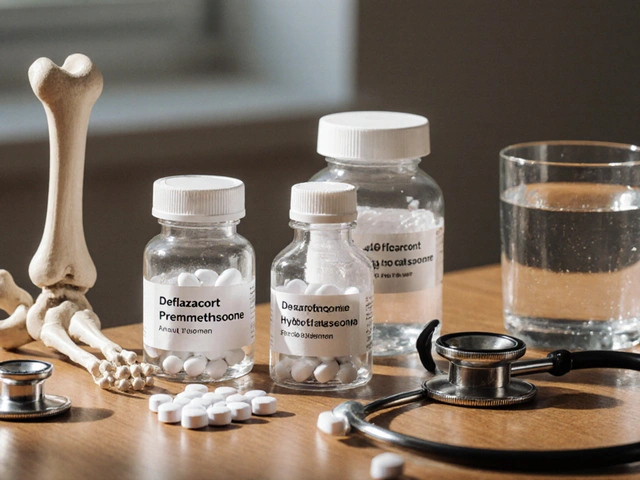The world’s most dangerous killers aren’t lions, sharks, or snakes—they’re measured in micrometers, and their favorite battleground is the human body. Bacteria have shaped the trajectory of medicine and public health, fueling hundreds of years of research and endless rounds of exam questions. Yet, most people don’t realize just how clever bacteria can be when it comes to invading, thriving, and dodging the immune system. Knowing how these microscopic invaders operate isn’t just interesting trivia. It’s foundational if you’re serious about medicine, biology, or surviving your next micro exam.
The Bacterial Arsenal: How Pathogens Enter, Survive, and Multiply
Bacteria aren’t just passive invaders. Every successful infection starts with a deliberate entry and a game plan. For bacteria to wreak havoc, they first have to find the right portal. The most common entryways? Skin breaks, respiratory tract (breathing), gastrointestinal tract (eating), urogenital openings, or direct medical interventions like catheters. Not all bacteria bother with fancy tactics—some, like Clostridium tetani, sneak in through tiny wounds. Others, like Streptococcus pneumoniae, ride microscopic water droplets deep into your lungs. Fun fact: Our gut alone faces a microbial assault of around ten thousand billion bacteria every day, but only a handful actually manage to cause disease.
But why don’t our bodies just wipe them out? The moment a bacterium lands, it confronts physical barriers (like skin and mucous membranes), chemical obstacles (acids, enzymes), and the ever-vigilant innate immune system. Successful pathogens beat these defenses using virulence factors—special tools that let them attach to host cells (via pili or fimbriae), invade tissues, and multiply. One all-too-familiar example: E. coli’s sticky fimbriae—it helps this microbe latch onto urinary tract walls, resisting being flushed away.
Finding the right environment is only half the challenge; survival requires dodging the immune system. Capsule-forming bacteria like Streptococcus pneumoniae coat themselves in slippery shells, preventing immune cells from “recognizing” them. Mycobacterium tuberculosis uses a different trick, hiding out inside macrophages and neutralizing the enzymes that could kill it. And then there’s antigenic variation—a way to shuffle surface proteins so the immune system can’t keep up. Imagine changing your wardrobe every hour so no one can remember what you look like; that’s how Neisseria gonorrhoeae keeps reinfecting hosts.
Inside the Attack: Virulence Factors and Toxins
Once past the front lines, bacteria unleash their secret weapons. Not all bacteria are equipped with the same set of tools. Virulence factors can include proteins, enzymes, and other molecules that let them stick, sneak, or sabotage their host. A textbook example is Helicobacter pylori, the stomach bug blamed for ulcers. It makes urease—an enzyme that neutralizes stomach acid, turning a deadly environment into a comfortable playground. The bacteria then burrow into the mucous lining and trigger inflammation.
Toxins are infamous for their drama. Bacterial toxins fall into two main categories: exotoxins (secreted proteins) and endotoxins (lipopolysaccharides found on Gram-negative bacteria cell walls). Exotoxins are precise killers. Corynebacterium diphtheriae, the diphtheria bug, produces a potent toxin that shuts down host cell protein synthesis, leading to cell death. Botulinum toxin, made by Clostridium botulinum, is so deadly that even a microscopic dose can paralyze or kill—a single gram could wipe out millions. Meanwhile, endotoxins cause non-specific havoc; they kick-start massive immune reactions, often leading to fever, shock, and organ failure. Ever heard of septic shock? Endotoxins, mainly from E. coli or Neisseria meningitidis, are usually to blame.
Enzymes give even more firepower: hyaluronidase breaks down tissues for easier spread, coagulase helps Staphylococcus aureus hide inside sticky clots, and hemolysins bust open red blood cells for food and iron. The ability to form biofilms—sticky communities of bacteria attached to surfaces—is another game-changer. Biofilms make bacteria stubbornly resistant to antibiotics and immune attacks; that’s why infections on catheters or prosthetic joints are so difficult to treat.
Bacteria don’t just attack; they talk to each other. Quorum sensing lets them coordinate attacks by sending chemical messages. For example, Pseudomonas aeruginosa will only produce its most harmful toxins once it “realizes” enough bacterial neighbors are present—like criminals waiting for backup before making a move. This phenomenon helps explain why certain infections only become severe at high bacterial loads.
Outsmarting Host Defenses: Immune Evasion Tactics
Your immune system isn't just sleeping at the wheel. It responds with antibodies, killer cells, and a full arsenal of inflammation-causing chemicals. So why don’t bacteria just lose every battle? Many have evolved advanced evasion strategies. Capsules, as mentioned earlier, hide bacterial markers (antigens) from immune detection. Proteins like M protein in Streptococcus pyogenes repel attack by immune cells. Staphylococcus aureus creates Protein A, which grabs the “wrong end” of antibodies, neutralizing their effects.
Bacteria can also hide in plain sight. Listeria monocytogenes forces host cells to engulf them, then escapes into the cell interior, evading immune surveillance. Others, like Borrelia burgdorferi (Lyme disease), change their surface proteins every few weeks, making it hard for long-lasting immunity to develop. Some clever species produce enzymes that destroy immune responses—IgA proteases chop up antibodies specialized for mucosal defense.
The microbial cat-and-mouse game doesn’t stop there. Bacteria can suppress inflammation, limit cytokine production, or distract immune defenses by releasing decoy proteins. Chronic carriers (think Typhoid Mary) are individuals whose immune systems don’t fully clear pathogens—Salmonella typhi can hide in gallbladders for decades, shedding bacteria into the environment without causing symptoms in the host. This silent spread is a nightmare for public health.
Antibiotic resistance doesn’t directly help with immune evasion but often comes hand-in-hand, creating superbugs like MRSA (methicillin-resistant Staphylococcus aureus). Hospitals fight these infections with isolation protocols and cleaning regimens, but bacteria keep evolving. Their adaptability means doctors and scientists are always playing catch-up, and understanding the mechanisms of bacterial infections has never been more critical. You’ll find more on these mechanisms at the detailed review on mechanisms of bacterial infections.

The Human Factor: How Host and Environment Affect Infection
Bacteria aren’t equally deadly to everyone. Several factors shape the outcome: the host’s immune status, age, genetics, nutrition, and the presence of chronic diseases. For example, newborns have poorly developed immunity, leaving them vulnerable to bacteria like Group B Streptococcus, while the elderly face higher risks from pneumonia. People with immunodeficiencies (HIV/AIDS, cancer, immunosuppressive drugs) are prime targets for pathogens like Pseudomonas aeruginosa and opportunistic enteric bacteria.
Even stress and sleep play a role. Sleep-deprived students (hello, finals week) and people under chronic stress are more prone to respiratory and skin infections, likely because stress hormones suppress certain aspects of immunity. Malnutrition is another risk: Protein and vitamin deficiencies weaken barrier defenses and slow antibody production. That’s why bacterial infections cause higher infant mortality in regions with undernourishment.
The environment matters too. Crowding in schools, prisons, or refugee camps accelerates transmission. Hot weather helps bacteria grow on surfaces, while poor sanitation provides endless new exposures. Hospital environments, with immunocompromised patients and heavy antibiotic use, breed resistant strains and complex infections. The type of pathogen, its infectious dose, and how it’s transmitted—airborne, droplet, foodborne, blood—determine the speed and style of disease spread.
Behavior is a key modifiable risk factor. Simple proper hand-washing (which less than 20% of people do correctly, according to recent studies) dramatically cuts down bacterial infection rates in hospitals and at home. Vaccination blocks not only classic threats like diphtheria and pertussis but also certain bacterial pneumonia strains, slashing hospitalizations for vulnerable groups. And though we love our pets, close dog and cat contact lead to rare but serious infections with Pasteurella or Capnocytophaga, especially in people with weak immune systems.
From Infection to Disease: Clinical Manifestations and Diagnosis
Not every bacterial invasion turns into illness. There’s a difference between colonization—bacteria living somewhere harmlessly—and actual disease. Staphylococcus aureus lives contentedly in the noses of up to 30% of healthy adults. Disease only emerges when barriers break or the immune system drops its guard. Once bacteria start multiplying out of control or spreading, symptoms develop—redness, swelling, fever, pain, pus, and sometimes chills or rashes.
Classic symptom patterns can offer clues. A sudden sore throat, fever, and pus spots point toward Streptococcus pyogenes; a stiff neck and high fever might mean Neisseria meningitidis. Shock-like symptoms, especially with high fever and low blood pressure, hint at endotoxin-driven sepsis. Take E. coli O157:H7: It can cause bloody diarrhea within days of ingestion by producing Shiga toxin, which also risks kidney failure—kids are especially susceptible.
Diagnosing bacterial infections combines clinical hunches with lab tools. Cultures—growing bacteria from blood, tissue, or fluids—are gold-standard but can take days. Rapid antigen tests now allow same-day detection for strep throat or meningitis bugs. PCR-based techniques can find DNA signatures of hard-to-culture bacteria, even if antibiotics have already been started. Blood tests may reveal “left shift” (many young white blood cells), classic for bacterial infection. Imaging studies (X-ray, ultrasound, MRI) help spot abscesses or bone involvement if deep infection is suspected. Here’s a quick look at how often various infections pop up and their outcomes (US data):
| Disease | Common Bacterial Cause | Annual Cases (USA) | Mortality Rate |
|---|---|---|---|
| Pneumonia | Streptococcus pneumoniae | ~900,000 | 5-14% |
| Meningitis | Neisseria meningitidis | ~3,000 | 10-15% |
| UTI | E. coli | ~8,000,000 | <1% |
| Staph Sepsis | Staphylococcus aureus | ~120,000 | 15-30% |
| Lyme Disease | Borrelia burgdorferi | ~35,000 | Rarely fatal |
Antimicrobial susceptibility testing—seeing which antibiotics work against an infecting strain—is now routine for most serious cases. Doctors and students need to know that with increasing resistance, initial therapy often starts empirically based on the most probable cause. As lab data comes in, treatment narrows to target the identified bugs.
Prevention, Control, and Future Directions in Bacterial Infection Management
There’s a cliché that “an ounce of prevention is worth a pound of cure,” but in bacterial infections, it’s pure truth. Simple interventions—vaccinations, sanitation, safe food handling, responsible antibiotic use—have slashed infection rates in nearly every country. Group A strep, once notorious for causing raging epidemics of sore throats and rheumatic fever, is now far less common where penicillin is easily available and hygiene is prioritized. The rise of multidrug-resistant bacteria, though, is putting these gains at risk. Carbapenem-resistant Enterobacteriaceae, for instance, now threaten even the most advanced hospitals.
Vaccines remain essential. New designs use fragments of bacterial outer membranes or purified toxins (like the tetanus shot) to train the immune system without causing illness. Researchers are racing to create next-gen vaccines for threats like gonorrhea and tuberculosis, hoping to outpace bacterial evolution. Advances in rapid diagnostics—point-of-care PCR, biosensors—are making it possible to treat the right bug, with the right drug, at the right time, cutting down on unnecessary antibiotic use.
Public health strategies aren’t high-tech, but they’re incredibly effective. Regular hand washing, cough covering, cleaning shared surfaces, and safe sex practices shut down many common infection chains. Hospitals now monitor for outbreaks, isolate high-risk carriers, and audit antibiotic prescriptions to avoid fueling resistance. Ancient methods like quarantine have made a comeback during deadly outbreaks—proof that sometimes, what’s old works best.
The next frontier? Harnessing good bacteria (probiotics) to outcompete or block the harmful ones—an idea gaining traction in treating intestinal infections. Phage therapy, where viruses that target bacteria are used as living antibiotics, is also being revived for stubborn, multi-resistant infections. Meanwhile, raising awareness about the mechanisms of bacterial infections helps safeguard everyone, from students to seasoned clinicians.
As bacteria drift and adapt, our strategy must be nimble—diagnose fast, treat smart, prevent whenever possible, and keep learning. The real war against infection isn’t just fought in the lab or clinic; it’s in classrooms, libraries, and daily choices. If you want to crush your exams and actually understand bacterial pathogenesis at a level that makes you ask better questions, dig deeper, and go past memorization, this is where it starts.







namrata srivastava
23 July 2025The exposition delineates a panoply of bacterial virulence determinants, each constituting a discrete molecular stratagem for host subversion. Central to this discourse is the concept of adhesins, such as pili and fimbriae, which facilitate colonization of epithelial surfaces by mediating receptor-ligand interactions of high affinity. Subsequent invasion is orchestrated via secretion systems (Types I–VI), which translocate effector proteins that disrupt cytoskeletal integrity and modulate intracellular signaling pathways. The capsule, a polysaccharide envelope, confers anti-phagocytic properties by attenuating opsonization, thereby prolonging bacterial persistence within the circulatory compartment. Intracellular pathogens, exemplified by Mycobacterium tuberculosis, employ phagosomal arrest and acid resistance mechanisms to evade lysosomal degradation. Antigenic variation, as manifested by Neisseria gonorrhoeae, engenders phenotypic plasticity that outpaces adaptive immune recognition. Moreover, the production of exotoxins, such as diphtheria toxin, involves ADP-ribosylation of elongation factor EF‑2, culminating in translational arrest of host cells. Endotoxins (lipopolysaccharide) precipitate a cascade of pro‑inflammatory cytokines via Toll‑like receptor 4 activation, potentiating septic shock. Biofilm formation epitomizes communal resistance, whereby extracellular polymeric substances impede antibiotic penetration and foster metabolic heterogeneity. Quorum sensing regulates the temporal expression of virulence genes, synchronizing toxin release with population density thresholds. Finally, the evolution of antibiotic resistance mechanisms – enzymatic degradation, target modification, efflux pumps – underscores the adaptive capacity of pathogens in the face of pharmacologic pressure. This intricate tapestry of mechanisms underscores the necessity for an integrative understanding of microbial pathogenesis in both clinical and academic contexts.
Priyanka arya
1 August 2025Yo, did you know some of those “tiny” bacteria are actually part of a massive hidden agenda orchestrated by shadow labs? 😱 The whole "quorum sensing" thing feels like a secret code to coordinate world domination. 🌐👽
Loren Kleinman
9 August 2025When we reflect on the myriad ways microbes interact with us, it becomes clear that infection is not merely a battle but a dialogue. Each virulence factor can be seen as a word in the language of disease, and our immune system replies with its own lexicon of defenses. Understanding this exchange deepens our appreciation for the delicate balance between host and pathogen. It also reminds us that medical education must teach not only the facts but the underlying principles that tie them together. By fostering curiosity and critical thinking, we empower future clinicians to navigate complex clinical scenarios with confidence.
Sabrina Goethals
17 August 2025Wow...the way you break it down is sooo clear!!; i love the analogies...they really help!!!
But also, sometimes i feel like i miss stuff because the words get sooo fancy...
Sudha Srinivasan
25 August 2025People need to stop glorifying pathogens and start focusing on hygiene and vaccination.
Jenny Spurllock
2 September 2025The emphasis on preventive measures is spot on; hand-washing and proper wound care are simple yet effective tools against the spread of infection.
Bart Cheever
10 September 2025This article tries hard to sound smart but ends up just repeating textbook definitions.
Maude Rosièere Laqueille
18 September 2025While the core concepts are accurate, adding a few clinical pearls-such as the relevance of procalcitonin in bacterial sepsis-could make the guide more actionable for med students.
Amanda Joseph
26 September 2025Great, another boring lecture about germs.
Kevin Aniston
4 October 2025I get why some might find this material dry, but consider the bigger picture: mastering these mechanisms equips you with the analytical framework to solve real‑world problems, from diagnosing atypical infections to designing novel therapeutics. By approaching the topic with curiosity and connecting each fact to a clinical scenario, you transform rote memorization into meaningful learning. So, grab a cup of coffee, dive into the details, and remember that every microbe you study today could be the key to saving a patient tomorrow.
kiran kumar
12 October 2025Honestly, all this focus on bacteria is just a distraction from the real health issues caused by lifestyle choices.
Brian Johnson
21 October 2025While lifestyle factors are important, dismissing the impact of bacterial pathogens overlooks a major source of morbidity and mortality; comprehensive health strategies must address both.
Jessica Haggard
29 October 2025Hey everyone! Just wanted to say that this guide is a solid resource-thanks for sharing!
Alan Clark
6 November 2025Totally agree! I especially liked the part on biofilms-super useful for my microbiology class.
Mark Anderson
14 November 2025What an inspiring read! 🌟 Your clear breakdown of bacterial tactics makes this a must‑read for anyone preparing for exams or just curious about the microscopic battles happening inside us.
Shouvik Mukherjee
22 November 2025Thank you all for the thoughtful discussion; combining clinical insight with preventive advice will undoubtedly help students master this complex subject.